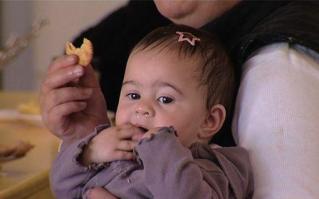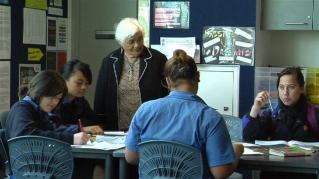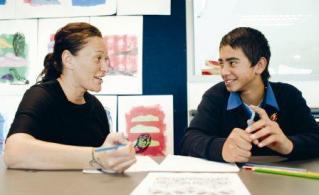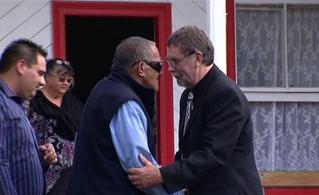Section navigation

This clip focuses on the future at Taihape Area School - and the reality of ongoing change, as discussed by the iwi representative on the Board of Trustees, the iwi educational representative, the two Te Kauhua facilitators, two parents, and a senior student. These stakeholders recognise that the changes made are just the beginning; they are excited about the future. They also acknowledge that, in order to meet the needs of their tamariki, everyone needs to work together - leaders, teachers, parents/whānau/iwi, and students.
Questions / Things to think about / Activities
In what ways do we demonstrate ‘ako’ in our school – where whānau and educators are open to learning from, and with, each other?
1. What evidence is there that shows what works for Māori students in terms of expectations? (See Key evidence: Ka Hikitia pages pp 32, 45 about teachers’ attitudinal shifts; and pp 10, 23, 32, 44 re teacher and parent expectations.) How can we apply this evidence to our school and community?
2. Key characteristics of effective whānau engagement have been highlighted in a literature review by Tahuri (2007). Looking at the list below, to what extent are these characteristics visible in our school?
- Recognition of Māori as equal partners, with their unique and rightful place (mana whenua)
- Validation of Māori culture (tikanga)
- Fostering of sustainable partnership relationships (whakawhanaungatanga)
- Doing the right thing, in a collaborative way (te mahi tika)
- Sharing responsibility and working together (ma te katoa te mahi)
- Bringing about the desired outcome/shared vision (of Māori students realising their potential, through collaboration and negotiation (ma te mahi tahi ka ea.)
3. Research by Biddulph et al (2003) found that it was sustained parental involvement, focused on learning activities/tasks, that improved children's achievement. What can we do in our school to ensure real and lasting change?
4. How will we know what aspirations our school whānau have for their tamariki?
5. How might we apply the evidence that shows what works for Māori students in terms of whānau engagement? (See pp 20, 32, 44, 47-49, 50 in Key evidence: Ka Hikitia about engaging parents.)
Filed under: Productive partnerships | Effective leaders





